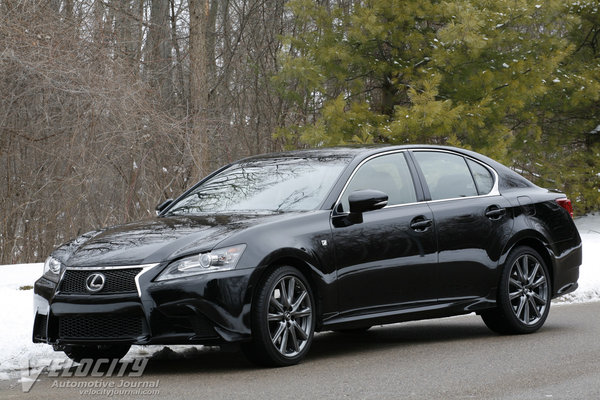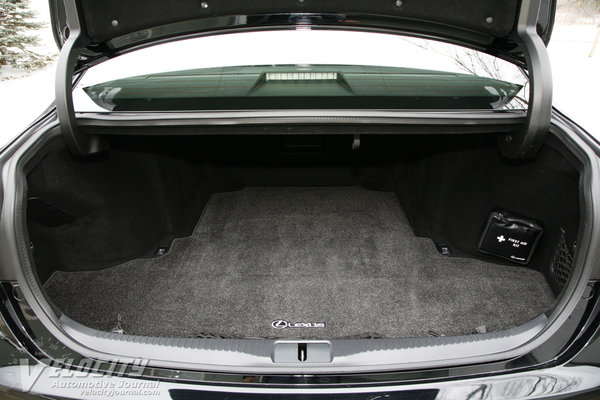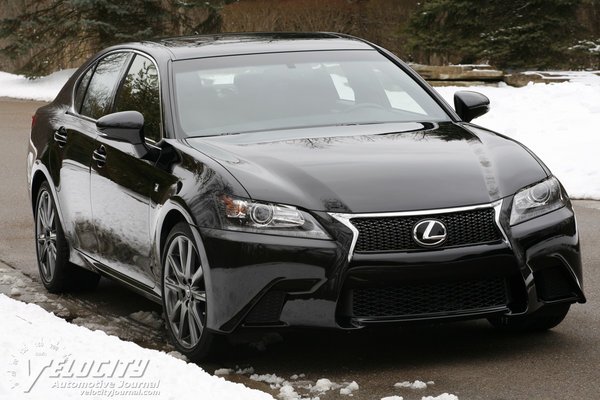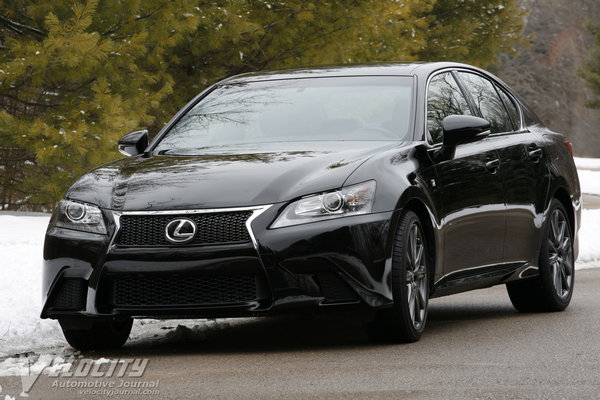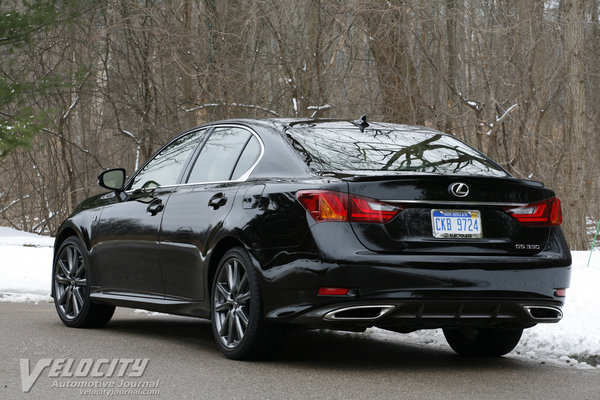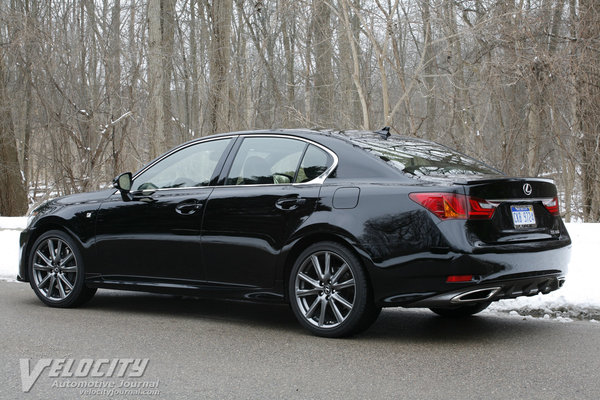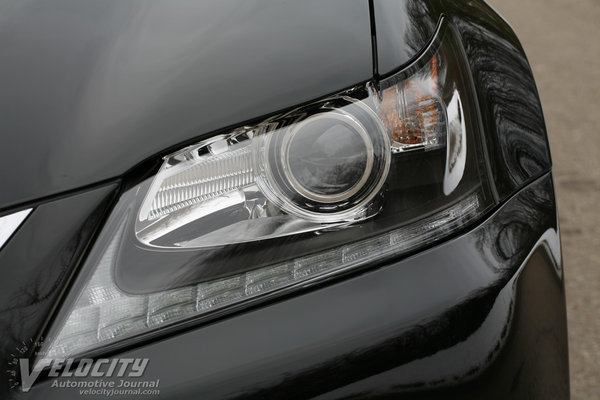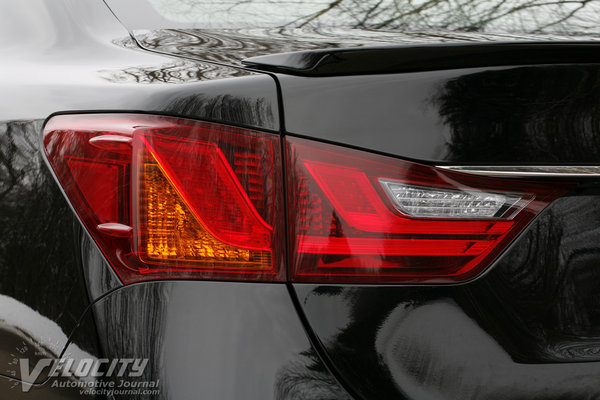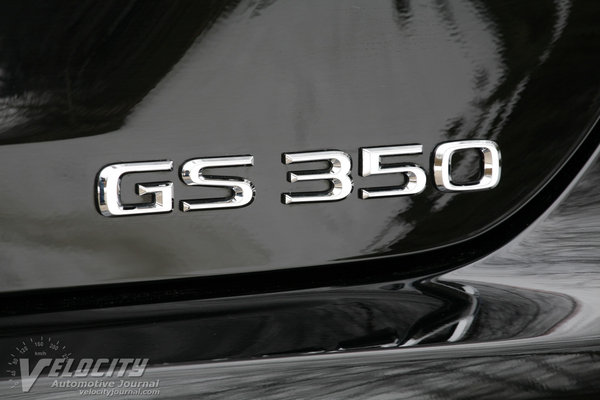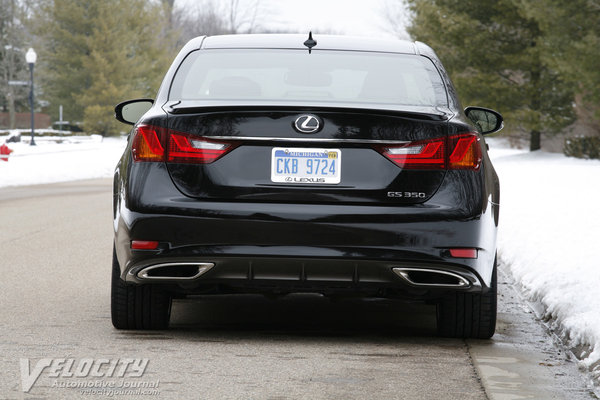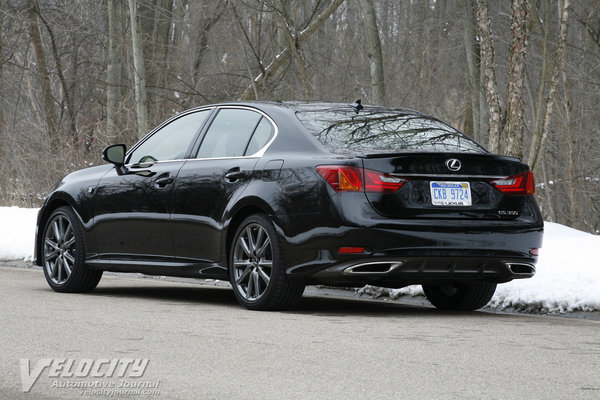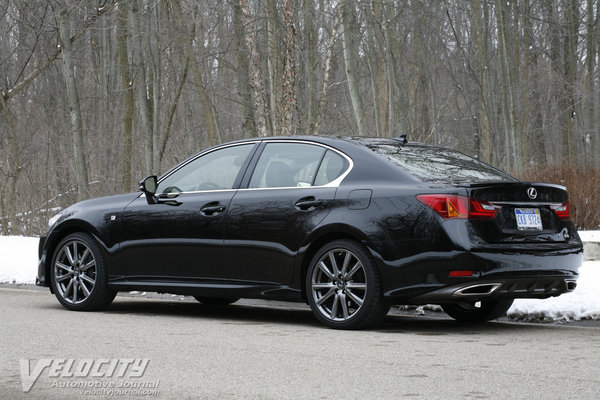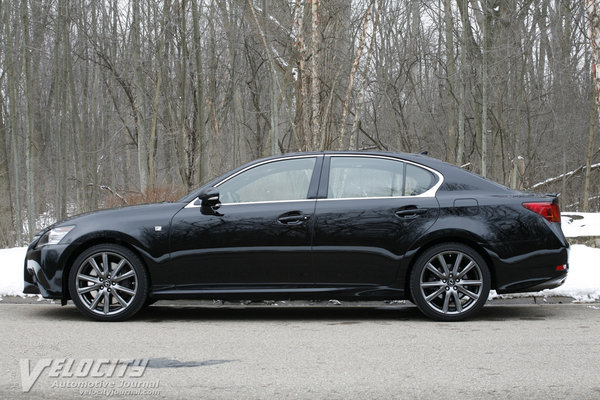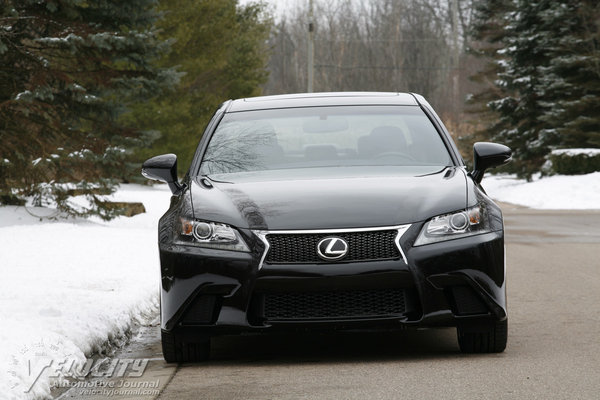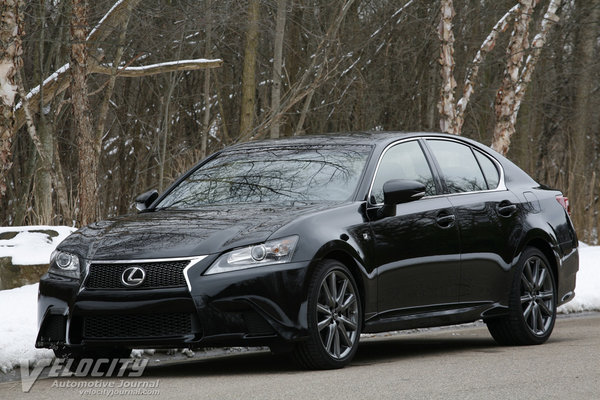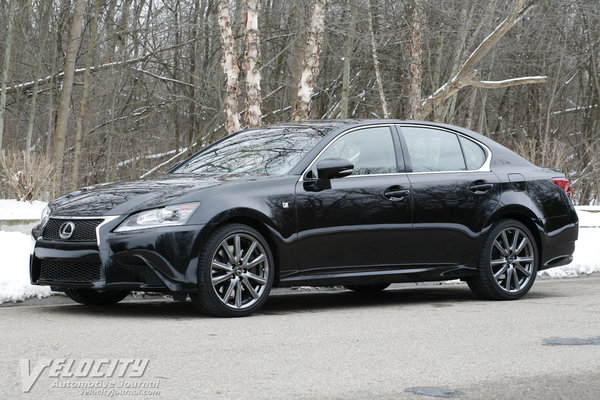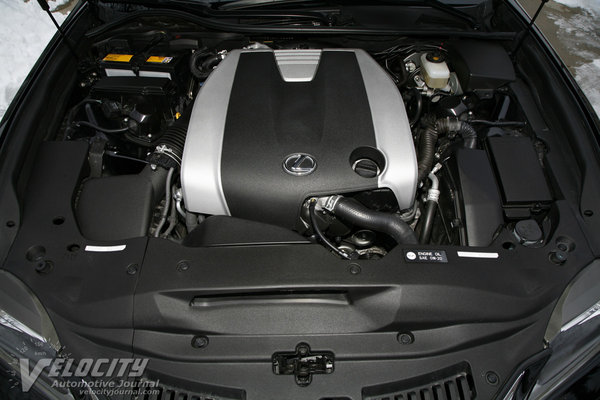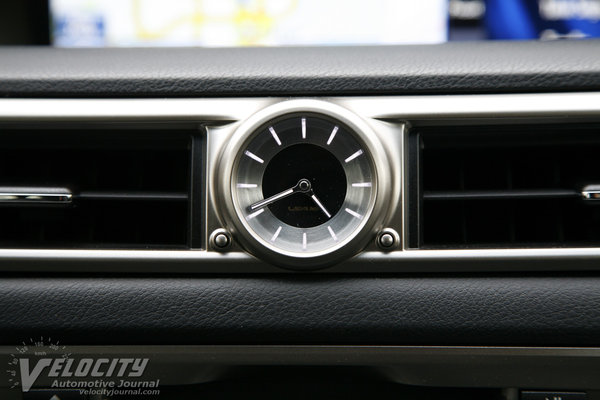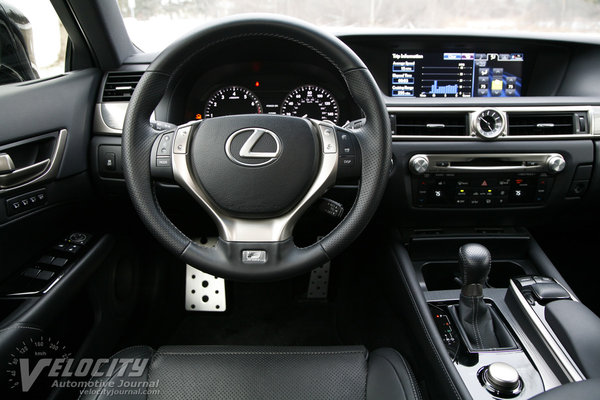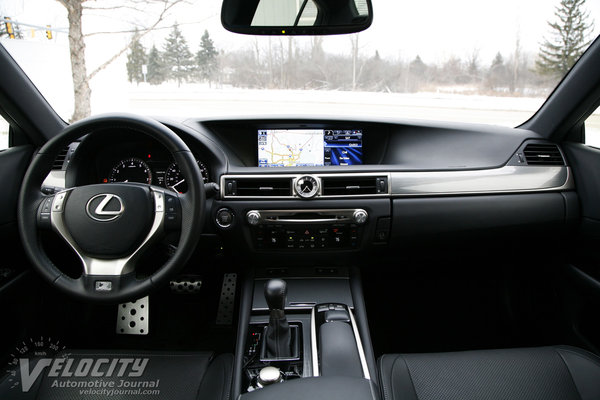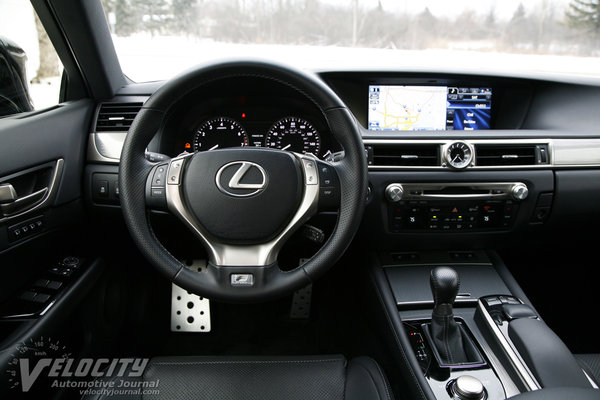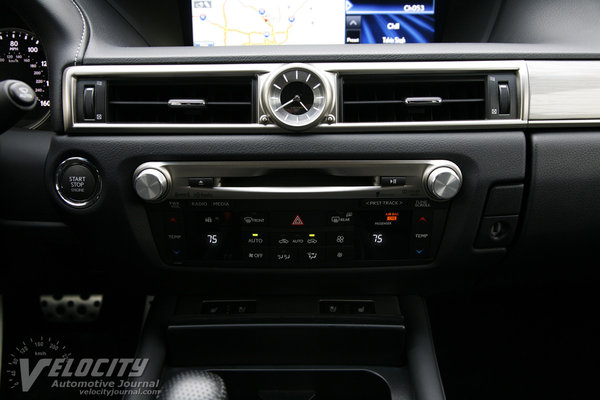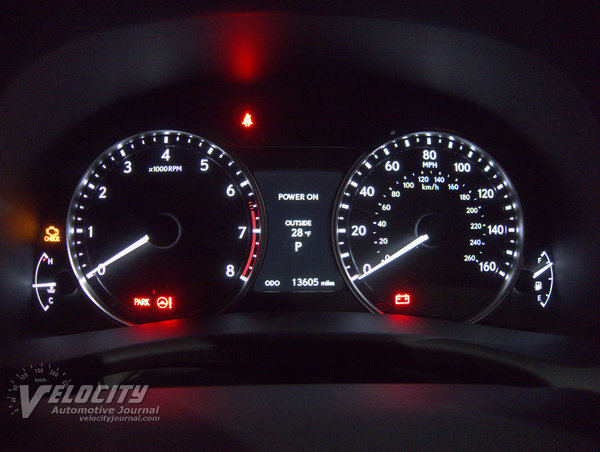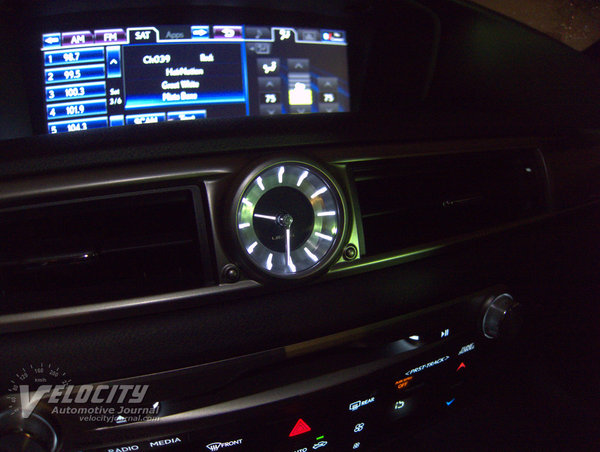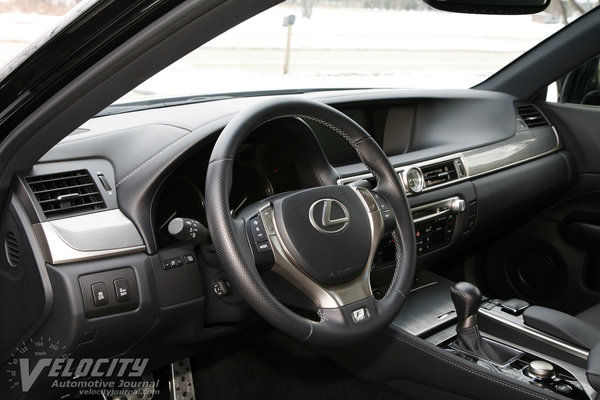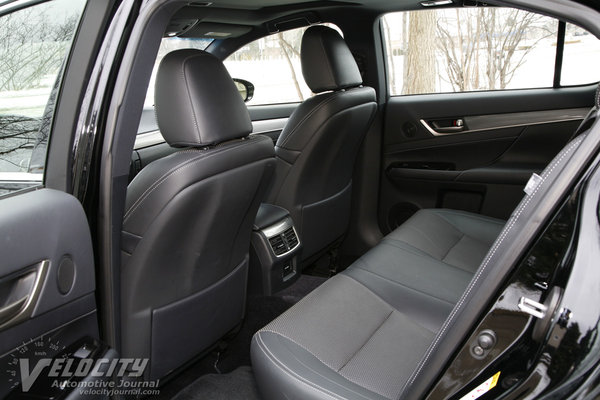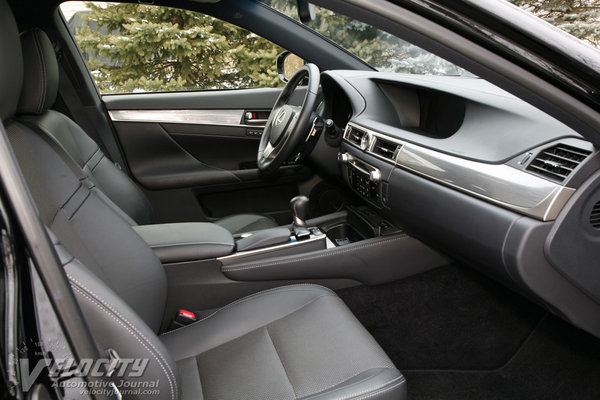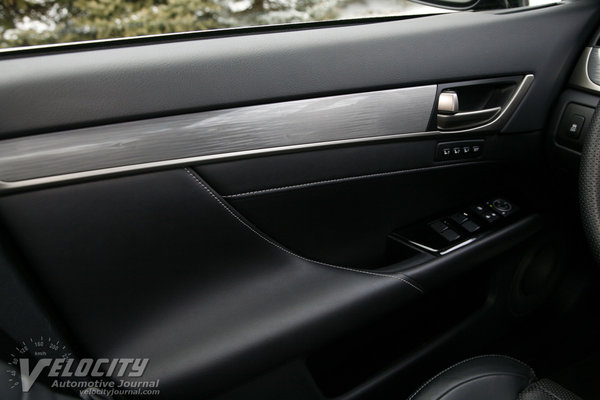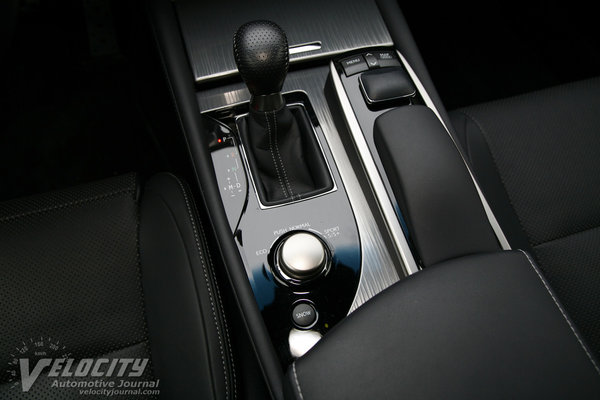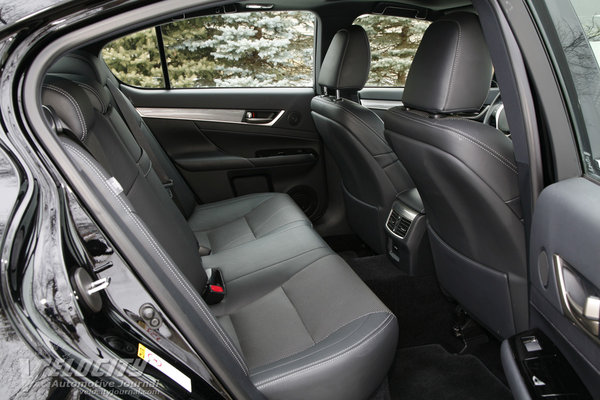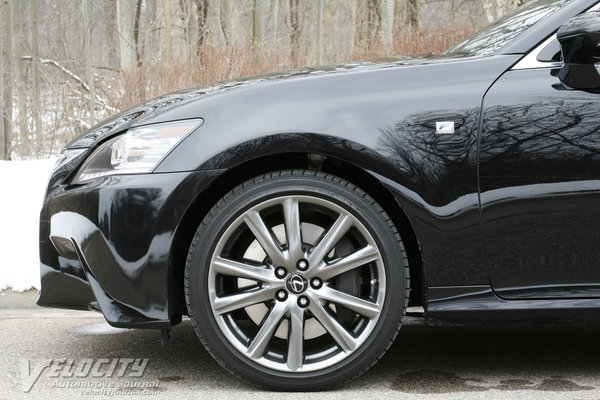2013 Lexus GS350 F Sport
08/04/2013
Shahed Hussain
As the middle sedan in the Lexus lineup, the GS is overshadowed by the flagship LS, and outsold by the popular ES. Nonetheless, this Lexus is intended to be an alternative to the Audi A6, BMW 5-Series, and the Mercedes E-Class, a formidable set of competitors. Lexus added a new F Sport package with suspension and brakes upgrades, along with unique front and rear fascias. The GS350 is available in both rear-drive and all-wheel drive models. The GS450h Hybrid is the most powerful and fuel-efficient model in the lineup.
The base rear-drive GS350 currently starts at $47,250 and ranges up to $59,450 for the GS450h. Our test vehicle had a list price of $46,900. Selecting the F Sport package adds $5,690 to the sticker. Enthusiasts will appreciate the 19-inch wheels, summer tires, adaptive suspension, larger diameter 4-piston front brakes, 16-way power seats, plus unique front and rear fascia included with the F Sport package. Additional options included Blind Sport Monitor System ($500), navigation ($1,735), and cargo net ($64), and trunk mat ($105). Including the $875 destination charge, the sticker price totaled up to $55,869.
In its latest iteration, the GS adopts the Lexus "spindle" grille and other styling details, but the previously available 4.3L V-8 is now gone, leaving the 3.5L V-6 as the sole powerplant. The F Sport suspension upgrades include stiffer springs, adjustable damping, plus larger diameter brakes, more aggressive brake pads, and bigger stabilizer bars. A 6-speed automatic sends power to the rear wheels, or all four wheels for the GS350 AWD. All GS models can alter suspension and powertrain settings via the "ECO" and "Sport S" modes set via a center console knob. Opting for the F Sport or Luxury package enables a special "Sport S+" mode that further tweaks the suspension, steering, and the Vehicle Dynamic Integrated Management (VDIM) system along with powertrain settings.
Lexus has devoted significant efforts to design a sporty interior for the GS. Materials and build quality are superb, as expected from Lexus. Interior hues are predominantly shades of gray, along with gloss black and titanium-colored accents. Perforated leather covers the steering wheel, with thumb grips on the 10 and 2 o'clock positions. A small "F Sport" logo on the wheel is a subtle reminder that this is sporty GS. Dual paddles behind the steering wheel allow quick manual gear changes. Behind the stubby shift lever for the 6-speed automatic is the rotary knob control for the drive modes. The default setting is "Normal", but we typically set it to "Sport S" or "S+". A snow mode is engaged via a button on the center console. A power rear sunshade, activated by a center console button, prevents back seat passengers from baking in the summertime. Dual 12V power outlets and a USB input in the center console allow mobile phones and media players to charge and connect to the audio system.
Both driver and front passenger get multi-adjustable heated and ventilated seats covered in perforated leather. Surprisingly, the front passenger also gets power lumbar support. The driver's seat and the steering wheel memory setting automatically move into the preset position after entry. Seat comfort is above average, but larger thigh bolsters would provide better support. Front headroom is adequate for occupants less than 6-feet tall, but the A-pillar is close to the driver's head. Rear passengers in the outboard seats benefit from excellent support and comfort, but the middle position has a stiff seatback and limited headroom, rendering it unusable for anything beyond short trips. Also, the relatively short rear doors impede easy egress for back seat passengers.
According to Lexus, the new GS benefits from a stiffer body from additional welds in critical areas. A nearly two-inch wider track (62.0 in./62.6 in. front/rear) aids cornering. Aluminum control arms reduce unsprung weight. The front suspension is a double-wishbone layout with coil springs and stabilizer bar. At the rear are multi-links, coil springs and stabilizer bar. Both front and rear brake rotors are vented, with 4-piston front calipers. The F-Sport package for the rear-drive GS upgrades the front rotor diameter to 14.0 inches vs. 13.1 inches for all other models. The nineteen-inch alloy wheels are shod with 235/40R-19 size in front and fat 265/35R-19 Y-rated Bridgestone RE050A tires. Curb weight for the RWD GS is 3,795 lbs.; opting for all-wheel drive raises curb weight to 3,980 lbs.
Lexus chose to offer only the 3.5L V-6 in the new GS, but the latest version now adds direct injection along with port fuel injection. As before, the all-aluminum V-6 develops 306-bhp @ 6,200 RPM and peak torque of 274 lb.-ft. @ 3,600 RPM, aided by VVT-I variable valve timing. Redline for the DOHC V-6 is set at a conservative 6,500 RPM, but the 11.5:1 compression ratio demands premium unleaded for maximum power.
The GS sends power to the rear wheels via the A760E 6-speed automatic. Both fifth (0.717:1) and sixth gear (0.586:1) are overdrive. All-wheel drive models are equipped with the A760H transmission with identical ratios, but the axle ratio is slightly shorter at 3.769:1 vs. the 3.615:1 for the rear-drive GS. EPA fuel consumption for the GW RWD is rated at 19/28 MPG (city/hwy.). Choose the AWD model and two MPG are lost on the EPA highway rating. Most of our driving was confined to short trips, but we averaged between 19 and 24 MPG.
As expected from Lexus powertrains, the V-6 never sounds stressed anywhere from idle to its 6,500 redline. Throttle response is linear throughout the rev range as the 6-speed automatic smoothly runs up the gears. Occasionally, we used paddle shifters in to take control, most often when the powertrain setting was in "Normal" mode. Manual gearchanges via the console shift lever are also an option, but the paddle shifters are more convenient. Lexus claims the rear-drive GS will sprint to 60 MPH in 5.7 seconds, on its way to a top speed of 142 MPH.
Since the GS is positioned as a sport sedan, we were especially intrigued by the F Sport package with its adjustable damper and powertrain settings. Of the various suspension modes, we found that the "Eco" setting damped throttle response so severely that we only used it for testing. Selecting "Normal" mode caused the transmission shift algorithms to upshift at lower RPM and delayed downshifts at full throttle, undoubtedly saving fuel. Enthusiasts will likely prefer the "Sport" or "Sport +" modes which quicken throttle response and move transmission shift points higher in the rev range. Firmer damping in the sport settings allowed the GS to track accurately on the highway. While the "Normal" setting is the best compromise for lower speeds and urban roads, soft damping allows too much suspension float on the highway. The larger front rotors in the F Sport ensure impressive stopping power, while the sophisticated suspension minimizes nosedive under hard braking. Around curves, the GS maintains a relatively flat attitude, regardless of the suspension mode selected. Opting for the F Sport package and its sticky Bridgestones ensured tenacious grip and immediate turn-in response. The stiff Bridgestone traded some ride compliance and increased road noise on concrete surface for enhanced handling and grip (at least in warm weather). Even with performance tires, the GS proved to be a nearly silent high speed cruiser.
Lexus redesigned the GS as a credible sport sedan, yet maintained the underlying refinement of all the models in its lineup. Aiming to simplify the GS lineup, Lexus has consciously chosen not to match the breadth of luxury sedan variants from the BMW, Audi, and Mercedes-Benz. While the Germans offer an expansive range of engines, options and pricing, Lexus aimed at the center of this segment with its comprehensively-equipped GS. Until the introduction of this fourth generation GS, enthusiasts had little reason to consider Lexus, but the addition of the F Sport package transforms the GS from merely competent into a true sport sedan.

